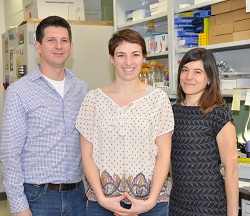
The discovery could contribute to the development of cell therapies and more targeted treatments against cancer
A study conducted by a research team led by Michel Cayouette, Full IRCM Research Professor, Director of the Cellular Neurobiology research unit, and Adjunct Professor in the Department of Medicine (Division of Experimental Medicine) and the Department of Anatomy and Cell Biology at McGill University, in collaboration with a team led by Stéphane Angers, Associate Professor at the University of Toronto, makes the cover of the latest edition of Developmental Cell following the discovery of a mechanism enabling the production of cellular diversity in the developing nervous system.
In order to multiply and generate new tissues, stem cells divide into two daughter cells, which are not necessarily identical: the daughter cells can differentiate to produce various cell types that are essential to proper tissue function. This is called cell diversification. However, the factors that drive daughter cells to be identical or different remain poorly understood by scientists.
To investigate this phenomenon, the IRCM team hypothesized that the orientation of stem cell division influences cell diversification. “To illustrate this idea, let’s suppose that we have on a table a red apple with the top part green and the bottom part red, explains Carine Monat, PhD student in Michel Cayouette’s laboratory and co-first author of the study. If the apple is cut perpendicularly to the table, we will have two identical pieces with red and green parts; but if we cut it parallel, the pieces will be different from each other, one red and one green.”
